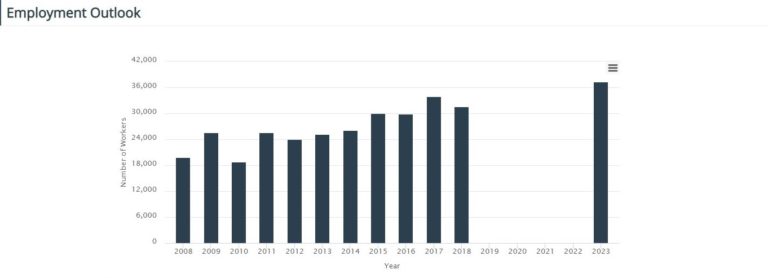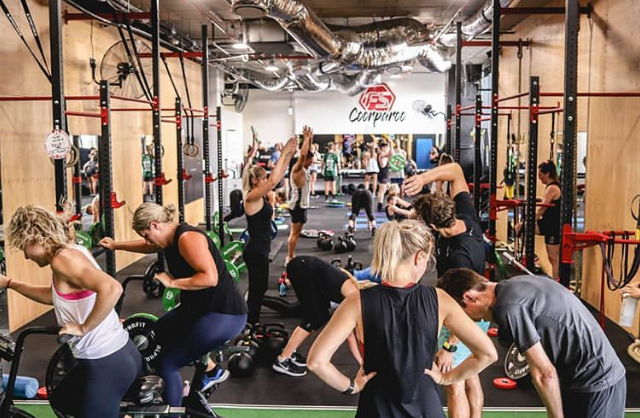
Are you looking for a job that’s fun, flexible and rewarding? Having a career in the fitness industry could be for you. There’s an almost endless list of career paths, and, regardless of which one you take, you’ll be helping others to live a healthier lifestyle. But, before you jump in there and get trained as a fitness professional, it’s worth finding out what to expect from working in the fitness industry.
This article will help you to do just that. With details of possible job opportunities, the average salary you can expect, trends and opportunities in the market, we’ll help you to decide if a fitness career is right for you.
Types of Career in the Fitness Industry
While the fitness industry is filled with a wide variety of job opportunities, your career will be shaped by the certificate you hold.
A) Career options with a Certificate II in Sport and Recreation:
- Community sports coach
- Recreation assistant
- Grounds and facility maintenance
- Sports administration assistant
- Sports-related retail or customer service provider
B) Career options with a Certificate III in Fitness:
- Gym instructor in a commercial or boutique gym
- Group exercise instructor in a commercial or boutique gym
C) Career options with a Certificate IV in Fitness:
- Personal trainer in a commercial or boutique gym
- Specialised personal trainer e.g. working with children or special needs clients
- Business owner and personal trainer
- Outdoor group and personal trainer
- Group fitness instructor in a commercial or boutique gym
- Resort or cruise ship fitness instructor
D) Career options with a Diploma of Sport:
- Sports Coach
- Sport Development Officer
- High-performance strength and conditioning coach
- Managerial position in a gym or sports organisation

Average Salaries in the Fitness Industry
Because the fitness industry is so diversified, the salary range varies greatly. In 2019, the average of reported salaries and according to payscale for all fitness professionals was $50,000 per annum. However, this was spread over a range of $36,500 to $110,000.
The lower end of the scale typically represents fitness professionals with basic qualifications such as Certificate II and III, while the higher range is reached by personal trainers who own their own business or work in a managerial capacity.
Outlook for the Fitness Industry
Since 2005 the fitness industry in Australia has experienced significant growth. As the population continues to age and the obesity rate remains high, the demand for health and fitness services is only expected to continue to rise.

This increasing demand provides promising job opportunities in the industry. In fact, the Australian Bureau of Statistics r estimates that between 10,000 and 25,000 new positions will become available over the next 5 years. What’s more, fitness professionals currently enjoy a lower than average rate of unemployment and our graduates generally find it easy to secure employment after graduation. Read more in Personal Training Employment Data, Gym Manager Employment Statistics, Sport Coach Employment Data.
Fitness Industry Challenges
The main reasons that people state for discontinuing their current fitness program and gym membership include:
- No time due to changing work and family commitments;
- Changes to their financial situation; and
- Moving to a new house.
While it may seem like these reasons are outside of the control of fitness professionals, being aware of the challenges your clients face can help you to provide solutions, improve retention and satisfaction. Can you think of any ways you could address these common client concerns?
Fitness Industry Opportunities
In the fast-growing fitness industry, all aspiring fitness professionals must consider these opportunities:

- Becoming a specialist in fast and functional fitness – People want results in less time and you can give them that by becoming an expert in HIIT, bodyweight and functional training styles.
- Providing specialist services to specific populations – The growth of the fitness industry is largely driven by the aging population and rising rates of obesity. By tailoring your services to address the specific needs of this market, your business has the potential to grow as the industry does.
- Staying up to date with continual learning – Clients want fitness professionals who are highly knowledgeable, skilled and experienced. Stay up to date with the latest best practices by using free training materials provided by industry bodies. Fitness Australia has a great online resource called iLearn as well as Grow Your Fitness Business, both of which are aimed at unlocking your professional potential.
Fitness Trends to Incorporate into Your Study
Prep yourself to start your fitness career with a bang by incorporating these top fitness trends into your study program:
- Wearable technology – Fitness watches aren’t going anywhere so learn how to use them to motivate your clients in a way that suits your training style.
- Bodyweight, HIIT and strength training – Your clients will want the latest, most popular training methods to achieve their fitness goals. Learn about the benefits of these types of training and incorporate them into your assessments.
- Be a coach, not a trainer – Fitness professionals must deliver the whole package these days. Learn about mindset, nutrition, stress reduction and other holistic lifestyle principles to create superior value.
Learning More About the Fitness Industry
If you want to become a fitness professional and want to learn a bit more about how to create a successful career, download our full guide for potential students.
Or, if you’re ready enrol now.
If you found this article useful you may also enjoy reading How to Become a PT, or Know Your Fitness and Gym Lingo.
interested in studying to work in the Fitness Industry? Schedule a phone call with our Careers Adviser, just click in the image below.

